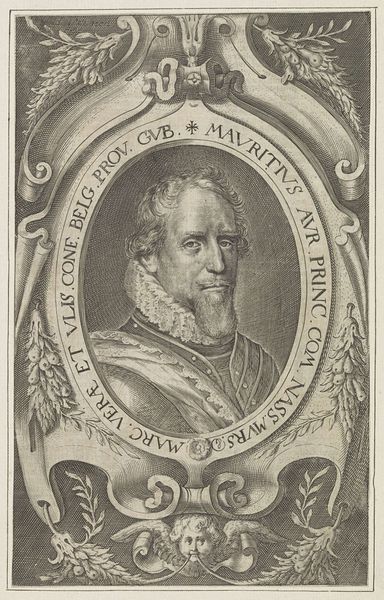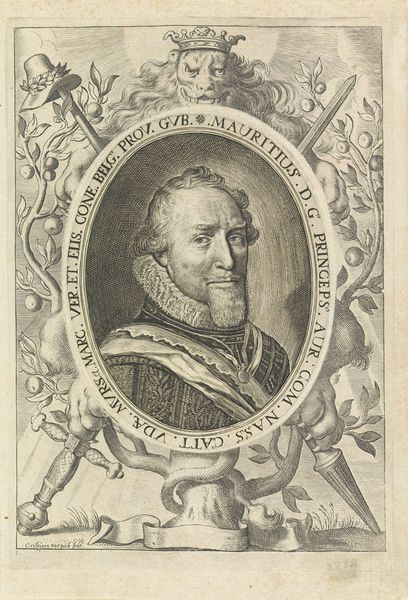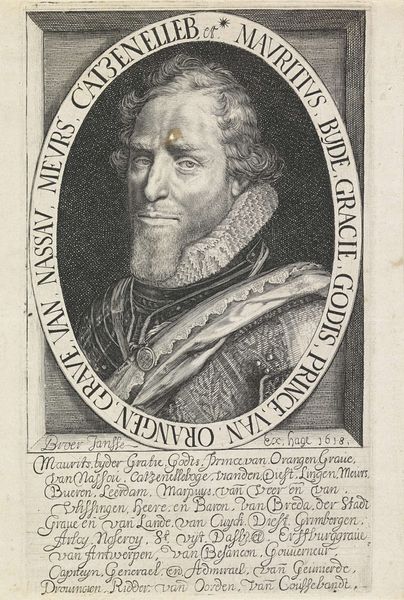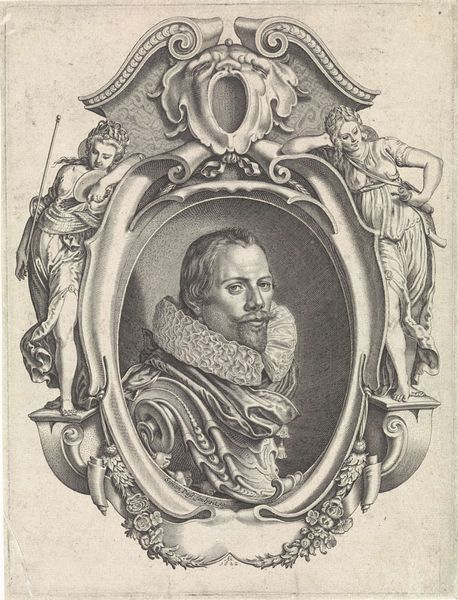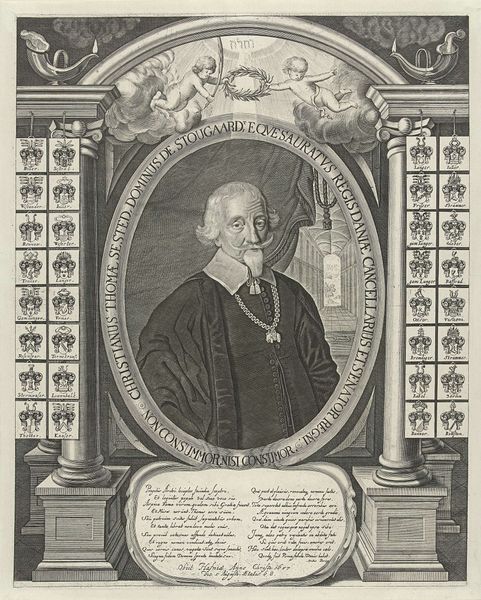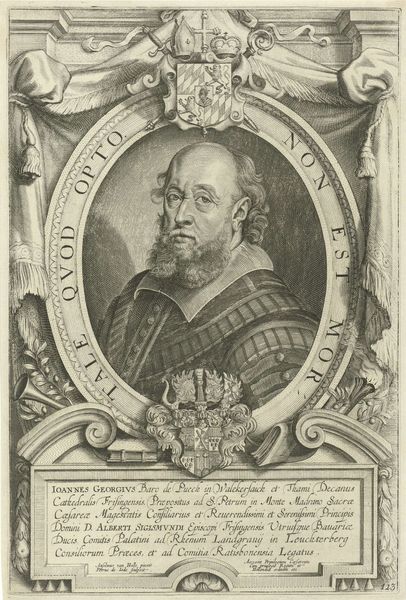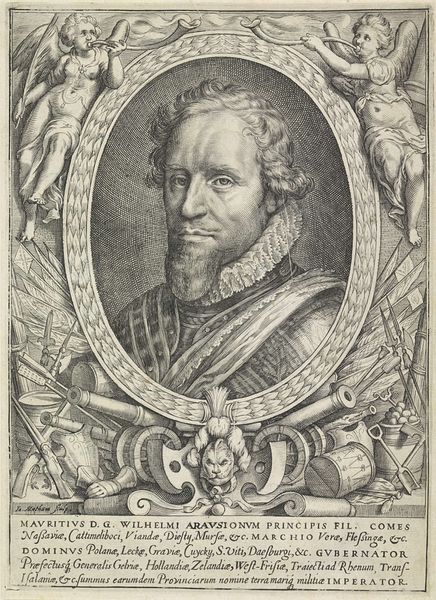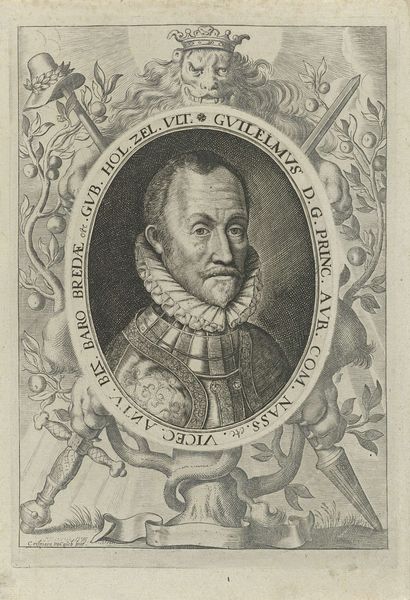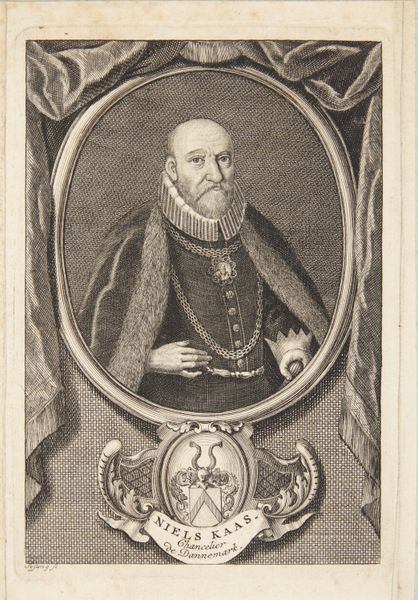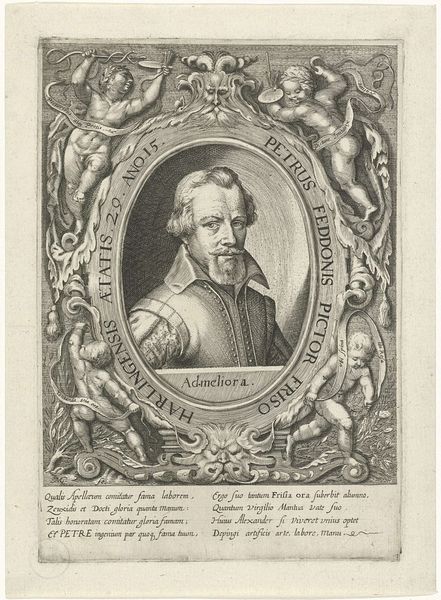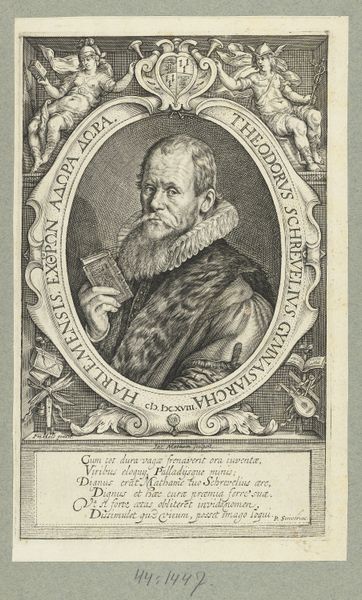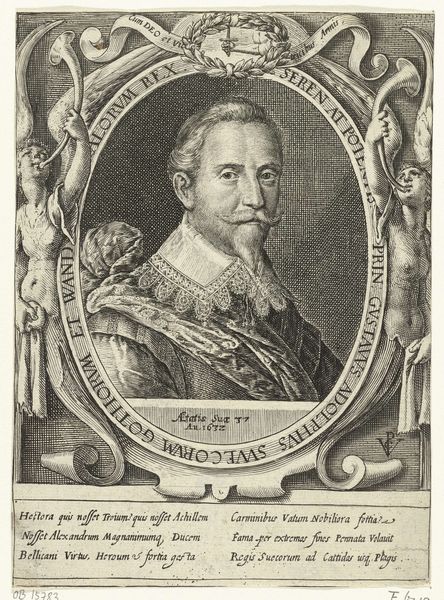
print, engraving
#
portrait
# print
#
old engraving style
#
caricature
#
portrait reference
#
portrait drawing
#
history-painting
#
engraving
Dimensions: height 354 mm, width 306 mm
Copyright: Rijks Museum: Open Domain
Editor: This is a portrait of Maurits, Prince of Orange, dating between 1580 and 1637, made by Willem de Passe. It’s an engraving. The detail is quite striking, and there's so much going on in the composition. What catches your eye, and how would you interpret this work from a formalist perspective? Curator: Immediately, I'm drawn to the strategic arrangement of line and form within the pictorial space. Note the stark contrast created by the intricate hatching that defines the prince's facial features and the relative smoothness of the surrounding cartouche. How does this tension contribute to the overall visual impact? Editor: I suppose it forces your eye towards the Prince's face, the central focal point. It’s a way of directing the viewer, isn't it? The ornamental frame seems secondary despite its detail. Curator: Precisely. And consider the semiotic weight of that frame itself: the sculpted forms, the heraldic devices. They operate as visual signifiers. One can 'decode' the elements surrounding him. They signify power, lineage, and virtue. Note, too, how the portrait's oval shape contributes to its structured, contained form. This creates a sense of dignified composure, but in a restrained space. Editor: So, the composition itself speaks to the Prince’s status and perhaps the need to control his image in that period? I hadn’t thought about it that way, but it makes complete sense when you focus on how each element works together formally. Curator: Indeed. By analyzing the visual grammar of the work – its forms, lines, and textures – we access layers of meaning beyond simple representation. This methodology allows the intrinsic qualities to communicate across temporal divides, doesn't it? Editor: Definitely. I see the portrait differently now, appreciating how the formal choices reveal deeper insights into its meaning. Thanks for that analysis!
Comments
No comments
Be the first to comment and join the conversation on the ultimate creative platform.
